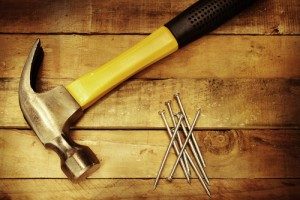Specify This Product! Don’t Specify That!
- < $100 Billion Bonanza: How Renovation Projects Are Bolstering Building Product Manufacturers
- > LEED v4.1 Certification Gains Traction In AEC Marketplace
Design professionals are inundated by product advertisements, education courses, brochures, emails, and other promotional materials from building product manufacturers. Project deadlines are getting shorter, fees are shrinking, and technology is constantly changing. How can building product manufacturers break through the noise to reach the decision makers?
Manufacturer Mistakes
There are several reasons why a building product manufacturer might not get their products specified. Product specification involves multiple variables, any which could sink a potential job. Often times, manufacturers make simple mistakes and lose jobs that they would otherwise obtain if they only implemented common sense and followed industry requirements.
Targeting the correct decision maker at an AEC firm is crucial. Walking in the door and expecting to see an architect via an unannounced visit will not work. Trying to get your products specified without 3-part CSI guide specs or transparency documentation will lead to nowhere. Getting into the office master specification isn’t impossible but it takes persistence and hard work.
Your Specification Sheets Are Useless
Aside from 3-part guide specs, most manufacturers should also have current transparency and sustainability related documentation. Unfortunately, many manufacturers in 2019 are still using outdated and completely useless LEED documentation, archaic safety data sheets (SDS), and have not even developed fundamental specification resources like Health Product Declarations (HPDs).
How are specifiers supposed to select your product for a LEED project when your LEED data sheets are from LEED v2 and over ten years old? Currently, we are on LEED v4 and by 2020 should be moving onto LEED v4.1. Manufacturers still using LEED v2 and LEED v3 data sheets are doing themselves and specifiers a great disservice. A LEED project team will quickly select another alternative with the proper LEED documentation over a company that refuses to invest dollars in keeping their specification resources up to date.
A dead give-way if your LEED documentation is out-of-date and useless is if it still uses numerals to denote the LEED credit. This method of categorizing LEED credits went out the window in 2013 and if you’re still employing this method in 2019 you need to update your documentation to LEED v4.
Invest In Future Specifications, Invest In HPDs
LEED v4 launched in 2013 with many new specification opportunities for product manufacturers. One of the easiest and most cost-effective ways for manufacturers to contribute 1 point is by developing a LEED v4 compliant HPD. It’s a slam dunk LEED credit and manufacturers who don’t provide HPDs for specification are only doing their brand harm.
I’ve spent several years since the launch of LEED v4, talking with architects and LEED consultants who specified another product because their first choice didn’t have an HPD. These mistakes can be costly, especially working with tech giants Google. The good news is that developing an HPD is a relatively straight-forward endeavor and much cheaper than developing an EPD, Declare Label, or Cradle to Cradle certification.
Manufacturers who are on the fence due to fears of divulging proprietary ingredients or formulations should rest assured protections have been put in place. In the blog, Elixir Environmental’s Top 6 Tips for Product Manufacturers Developing HPDs, we discuss basic steps of how manufacturers can develop a LEED v4 compliant HPD. There’s a big difference between an HPD and a LEED compliant HPD. Unfortunately, there are hundreds of non-compliant HPDs floating around the industry that will never contribute a LEED point. Follow the requirements and you won’t go wrong. Greenwash or try and game the system at your own risk.
Your Reps Don’t Know Their Own Products
Its common sense that a building product rep shouldn’t visit an architect’s office unless they are experts about their said products. Of course, a rep may not be able to answer every question, especially if it pertains to a very technical issue, but on the whole, any product rep worth their mettle will be able to intelligently discuss their 3-part guide spec, drawings, warranty, maintenance, etc.
If you wouldn’t send your product rep to an AEC firm without being able to intelligently discuss your product’s 3-part guide specs, why would you send them in without being able to answer questions how your product integrates with LEED? Not every employee in your company needs to be a LEED AP. However, your company should have a sustainability champion on staff that is at least a LEED Green Associate. This LEED expert can answer technical questions about your products and their LEED credit contributions.
Furthermore, every product rep should have at least a basic understanding on your LEED credit contributions. Its’ astonishing the amount of product reps I’ve met at tradeshows, conferences, and other events who had no idea how their products integrated with LEED. I understand their dilemma as they are busy following leads, putting out fires, and keeping their head above water. However, that’s no excuse not to learn the basics about how one’s products apply to LEED.
There are free LEED resources available to educate product reps. A no-cost LEED exam prep program is available to teach reps the basics of LEED v4, LEED credits, Materials and Resources, HPDs, EPDs, etc. There’s also a LEED v4 For Manufacturers program available to view 24/7. Companies that fail to educate their reps about LEED do so at their own peril.
For more information or to discuss the topic of this blog, please contact Brad Blank





